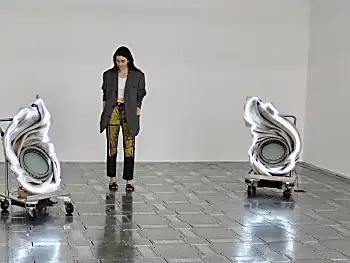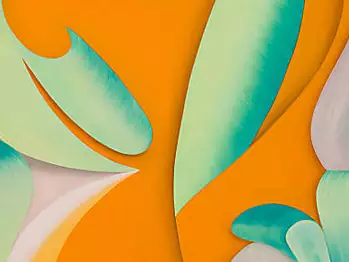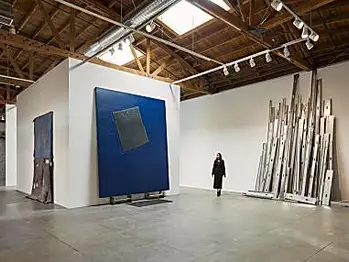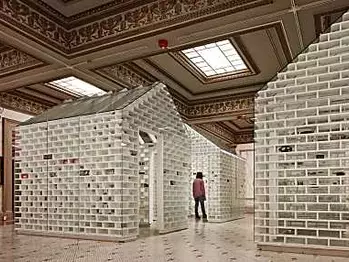A NEW WEBSITE FOR ART IN AMERICA ASSERTS THE RELEVANCE OF ART CRITICISM TODAY
Why relaunch a website in 2019? The question feels too obvious to answer but too fundamental to avoid. Part of the reason is that a new website allows us to look our best. Our new online home is more readable, easier to navigate, and visually sharper than any of Art in America’s previous digital incarnations. Consistent with the print redesign we introduced this summer, this site is meant to be more inviting. On the back end we’ve established systems that will allow us to grow rapidly in the future and, in time, provide visitors with access to our full archives.
But what may look from the outside like a standard design overhaul reflects a fundamental behind-the-scenes transformation. After more than a year of discussion, we’ve reset our priorities to establish a sustainable future for the kind of incisive critical writing A.i.A. has been publishing for more than a century. By joining with ARTnews on this new platform, we can reach an expanded audience without sacrificing the critical voice and analytical rigor that make A.i.A. distinct.
Related Articles
This publication is about art and artists, and we continually seek out writers whose ideas illuminate contemporary culture. That hasn’t changed. What’s different now is that we’re inviting more readers to understand why we are passionate about what we do. Investing in a new website isn’t merely an aesthetic choice. It’s a public argument that art criticism matters now—and that the potential audience for it is larger than ever before.
This relaunch has been a long time coming. Writing in a 1995 issue of A.i.A., Robert Atkins predicted that “future art historians will mark the 1994–95 season as the year the art world went on line.” He reported on his attempts as a critic to adapt to new formats like message boards and email:
“Art buffs with the requisite computer-and-modem hardware and Internet access could discuss the Whitney Biennial and Lacanian theory, inspect an international array of museum schedules, search the International Repertory of the Literature of Art (RILA), and peruse auction prices from Sotheby’s and Christie’s. They could also view artworks—some for sale and others designed for electronic, interactive formats—by artists ranging from paleolithic daubers to Laurie Anderson.”
You can almost hear the crackle and squawk of a dial-up connection in Atkins’s description, but it’s also possible to discern the outline of the art publishing landscape we know now. The 1994–95 season may have been a momentous one for technological development in the art world at large, but it was not the year that Art in America actually went “on line.” In fact, it wasn’t until the start of the Obama administration that A.i.A. established a robust digital presence, and even then the publication operated primarily as a print magazine with a website on the side.
The reluctance to embrace digital publishing at the turn of the millennium might have meant going against the grain to some extent. Yet it also allowed A.i.A. to skip some of digital media’s growing pains: pixelated images, clunky web browsers, hastily written blogs, and comments sections that often looked like intellectual cesspools. Our cautious advance to the Web was also informed by legitimate skepticism: how would people get paid for their work if it was being given away for free? (It’s a question that could have gotten a publisher branded as a party-pooper during the dot-com years, but that publications and readers are now confronting with a more sober sensibility.)

There was probably also a touch of snobbery in an art magazine’s anti-digital stance, the assumption that a rarefied discourse about recondite objects was most appropriately delivered in a gorgeous print object. I love our print publication. I’ve gushed about it—in print. Yet the Web vs. print divide that once seemed to hold existential implications now appears to be easily bridged. The relationship between formats is better understood as a continuum that also includes social media and live events. A publication is really the public it creates, and this new site is another step in the process of expanding the audience for art even beyond our current global readership.
We are investing in a thriving online platform because we think we can continue adding to a broad conversation about culture that’s been happening all around us and intersecting with the art world. Even as our online presence has been relatively muted and art criticism in general has begun to look like a niche practice, we’ve witnessed an explosive growth of other kinds of cultural criticism. Sophisticated discussions of television shows, for instance, sometimes borrow the analytical tools honed by art critics. Working within our narrow sphere, art critics have developed methods for assessing complex aesthetic objects that often trenchantly comment on or are directly connected to systems of real-world power. But it’s time to come out of the niche. We have a lot to say about questions central to the most pressing debates today, and we now have a larger megaphone with which to say it.
I want to thank everyone who worked on this project at Penske Media Corporation and my colleagues at ARTnews. Together, we have created what will be the primary online destination for criticism, analysis, and art world news.
More From Art in America







No comments:
Post a Comment